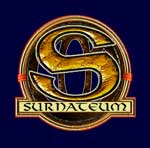|
|
 Inv.
SAH/ss-70121 Inv.
SAH/ss-70121
Ghost hunter's toolkit
Item acquired by the Collector from Rodolphe
V. in Belgium, 1957
Origin: Brussels, Belgium (1927-1940)
Description
This is a ghost hunter's 'toolbox' that once
belonged to the Ghost Hunters' Club in Brussels.
It contains cameras (including a very rare 1938 Speedgraphic),
bottles and boxes of talc (to take fingerprints left by frauds/forgers), notebooks
and pencils, flashlights, a set of 19th century skeleton keys, a
multi-purpose tool (hammer,
cutter, screwdriver, crowbar, pliers), several tape measures (to
detect the presence of false walls), folding rulers (to measure the
position of objects in order to verify the presence of poltergeists), a compass, maps, rope, string and copper wire,
wax to seal off rooms, thermometers (the temperature often drops in the
presence of a ghost), sticky tape, a portable battery, a typewriter (Corona Typewriter 1914),
whistles,
tongs, a stethoscope (to probe walls), a book on the trickery used in
spiritualism and trickery in general (by Proskauer), and a small silver
and gold sundial (the all-purpose tool of the occult). A pendulum, a
book of prayers, a pack of tarot cards and a series of photos of dead
children accompany the kit along with various devices, such as a travellers' espresso-maker for those long, all-night stake-outs.
With just a few exceptions, the notes of the Ghost Hunters' Club remain in the possession of the Club secretary, much to the regret of
the Surnateum's staff. They have never been found by our investigators.
Report
The Ghost Hunters' Club was founded by Rodolphe V., a journalist and
later editor at a major Brussels newspaper. Raised in a family devoted
to spiritualism and fascinated by ghosts ever since a trip to
haunted sites in England and Scotland while still a boy, Rodolphe V. set
about tracking spirits shortly after the First World War. He and a
photographer were dispatched to Mexico in 1927 during the revolution
led by the Cristeros, photographing individuals before and after they
were executed (23 November 1927). He ended up loathing violent death and
focused in particular on the ghosts of children.
In 1929, during a trip to the United States following the great Wall Street
crash, he met a correspondent who suggested that he investigate a case
known as the 'Haunting of Warsaw'.
Around 1931, after meeting Harry
Price, who launched an investigation into the case of Borley Rectory,
he began revamping his working methods. He joined forces with professional photographers, magicians, policemen and experts in
a wide range of areas, including mediaeval history, Egyptology and
mechanical engineering.
On the Collector's advice, he started using the 'key method' to
test haunted sites and objects.
He took many photographs of haunted sites, but never really obtained
any convincing shots - the one exception being the photo of the Beersel
Castle ghost taken in 1939.
However, he did feel that most of the tortured souls whose presence he
sensed were the ghosts of children - tormented souls looking for their
mothers or a favourite toy left behind on this plane of existence. He
posited a link between poltergeists and children.
He went on to develop a fairly rigid investigation protocol and then
tried to help tormented souls find peace.
He developed the HWW (How?, Where?, When?) protocol, the foundation of his
personal investigation system.
After noting down eyewitness accounts, the investigator checks that
the haunted site has been sealed off before trying to make contact with
the spirit.
He sometimes uses the sixth sense of animals to detect a haunting.
A book or a pack of tarot cards can be used to communicate with the
entity.
Later, radios and tape recorders played the same role, but they have
never been as accurate as tarot cards.
Other individuals joined the 'club':
John Doe: We do not have an exact record of his name, but he was the
team's main photographer. He was with Rodolphe V. in November 1927
in Mexico for the revolution waged by the Cristeros and attended the
execution of the Po brothers after their failed coup. Convinced that the
souls of the dead can be seen in some of his photos, he made his
technical skills available to the group.
He attempted - with little success - to photograph and film
apparitions and he analysed the many amateur documents that were sent to
him.
The team enlisted the aid of conjurors, one of whom has been
identified with near certainty thanks to the notes taken by the
journalist. His name was Jean-Jacques Louis Tummers, president of a
magic club and a noted non-believer. In the 1950s he founded the
Cercle belge d'illusionnisme
(CBI). He almost certainly served as a technical adviser when drafting
the HWW protocol.
An architect by the name of A. Gilot supplied maps and sketches of
haunted sites, including the diagram of Maulbronn Abbey,
which was haunted by the ghost of Dr Faust, Johannes Kepler and
others.
Some members of the team also joined the 'Scarab', an association for
research into and the application of the hermetic sciences (located at 12,
Rue d'Assaut, Brussels).
|
|









